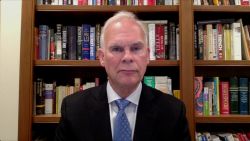In purely electoral terms, it is an extraordinary achievement. Narendra Modi and his Hindu nationalist Bharatiya Janata Party (BJP) have won a clear victory in India’s national elections.
Final results are still outstanding, but Modi’s BJP have currently won 297 seats, putting them well beyond the 272 threshold needed to form a government. Modi has been given a second term mandate that’s larger than the one he secured in 2014, when he first became Prime Minister.
Back then, the result was seen by many Indian observers as a one-off: An energetic BJP campaign, a mix of dog-whistles to mobilize the party’s hardline Hindu base and economic promises for aspirational Indians, earned Modi the biggest parliamentary majority for any single Indian party in thirty years.
At the time, India was ruled by a coalition government led by the Congress, the grand old party of India’s independence movement. Long seen as the natural party of government, it limped into parliament with just 44 seats.
In the days and years after that contest, many polling experts, political commentators and others who talk about these things outside elections often argued that, even if Modi won a second term, he would have to rely on a reduced parliamentary majority. Surely, they reasoned, the laws of gravity would operate on the 2014 tally.
Not so much, it’s now clear.

Defying gravity
Five years ago, Modi presented himself as an economic reformer who would finally deal with the issues that for years and years India watchers had been saying were holding the country back: Red tape, rampant corruption, joblessness among India’s young people, shoddy infrastructure. To borrow from another populist leader, he promised a complete overhaul to make India great again.
And although economic growth has remained relatively robust, evidence that he hasn’t succeeded has been stacking up: Joblessness remains a major problem, there are signs of growing economic distress in the still important farm sector.
Modi did deliver a national goods and services tax, something that economists have long been saying would help spur growth in the long term, but the way it was implemented has sparked criticism from many experts; it’s complex design, they say, has hurt many businesses instead of making things easier for them.
In 2016, meanwhile, Modi surprised Indians by saying he was withdrawing certain high denomination currency notes from circulation. The government’s reasoning for the measure kept changing: One day, it was a measure to fight untaxed wealth, the next, to force Indians to abandon cash in favor of digital alternatives. What was clear was the economic fallout: Reports from around the country showed how the measure had come as a blow to an array of cash-dependent industries, triggering layoffs, and hurt the poorest Indians.
Yet, he won—and he won big.

Modi, Modi, Modi
How? Looking back, it was striking, as the campaign unfolded, to see how the conversation – both on the side of the BJP and even on the opposition side – revolved around Modi, Modi, Modi… and Modi.
The BJP presented him as a muscular Hindu watchman who would defend the country, a narrative boosted by a military confrontation with Muslim majority Pakistan just weeks before campaigning kicked off.
The Hindu nationalist card was played more openly in 2019 than in 2014, making many liberals and Indians who belong to minority religions nervous. Link to previous analysis about India being more divided than ever.
The Congress Party’s Rahul Gandhi attempted to turn this on its head, repeatedly saying the watchman was in fact a thief by making reference to a controversy over a recent defense deal. It clearly didn’t work.
Local issues, such as economic distress in parts of rural India or the still serious joblessness crisis, don’t appear to have mattered.
Instead, voters backed Modi, despite the issues. As we wait for analysts to slice and dice the numbers and tell us more about what just happened, one thing seems clear: Modi appears to have played in and won a parliamentary contest—where voters elect individual MPs, responding, in theory, to local issues—by turning it into a referendum with just one question on the ballot: do you support Modi?






















